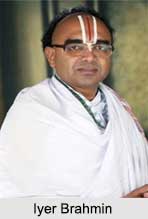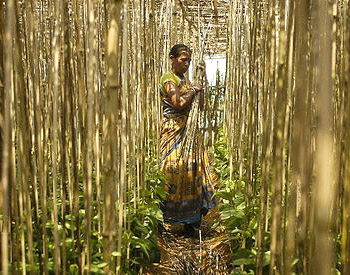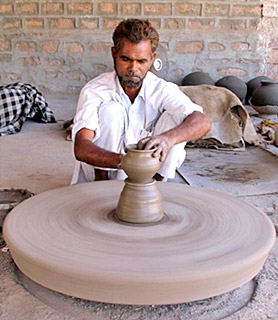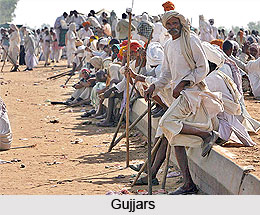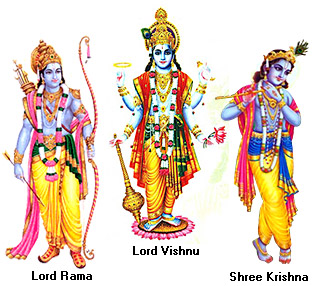About Vastu Principles
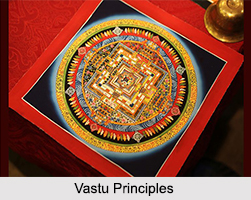 Vaastu is the science of direction that compounds all the five elements of nature and corresponds them with man and material. Vaastu Shastra is the art of creating compatible settings or a place to live or work, in most scientific methods, thereby adopting the advantages of the benefits conferred by the five elements called "Paanchbhootas" of the nature and paving the way for enhanced vigor, affluence, opulence and happiness in an enlightened environment.
Vaastu is the science of direction that compounds all the five elements of nature and corresponds them with man and material. Vaastu Shastra is the art of creating compatible settings or a place to live or work, in most scientific methods, thereby adopting the advantages of the benefits conferred by the five elements called "Paanchbhootas" of the nature and paving the way for enhanced vigor, affluence, opulence and happiness in an enlightened environment.
Vaastu stands one step further than a myth. It is a traditional Indian theory of architecture, demarcating guidelines for building design. The traditional practitioners of Vaastu were rightly termed `Vaastu Shastris` whose field of knowledge extended from philosophy to astronomy. The theory of Vaastu is permanent in nature and not binded by any time barriers. It suggests ways in which we can live in tune with the laws of nature.
Distinction:
Vastu is principally divided into two furcates: devalaya vastu (temple vastu) and graha vastu (house vastu). Graha vastu is sub-divided into the building of palaces, forts, ordinary houses, and landscaping. Feng shui can also be divided into two furcates: yin house feng shui (burial feng shui) and yang house feng shui (house feng shui).
Vastu and feng shui are strikingly different ways of viewing and organizing spaces and energy. Besides, vastu and feng shui also have very different roots and pasts. While the ancient Indians between 6000 and 3000 BC originated Vastu, Feng Shui`s origins can be traced in China around the year 25 AD.
Vastu, meaning living, and its primary principle state that, the earth should be considered as a living organism. Feng shui, meaning water and wind, is based on the principle that everything is energy and people should be in concordance with the environment.
Vastu and Feng Shui also tend to differ in the elements they administer. Vastu conceives the element earth, fire, light, wind and ether of great importance. Feng shui contends to the elements wood, water, fire, earth and metal in order to achieve harmony and equilibrium. They not only vary in the elements but also in its use. Perhaps, vastu also takes into consideration and manages the magnetic fields of the earth, which are the north and south poles as well as the sunrays as basic elements. Both manage the notions of energy, but in distinct ways and through distinct elements and strategies.
Vastu is based on three core principles, which clearly make vastu and feng shui differentiate with regards to their guidelines. The primary principle states that a premise e.g. a building, home or any space, must be designed in such a way that is useful and easy to be applied. The secondary principle states that the premise should be aesthetically correct, and the tertiary principle states that the premise should make its user feel comfortable within the space.
Vastu and Feng Shui have enormous discrepancies regarding the map of a house or a space. The manner in which a house should be oriented and objects placed in it are distinct for each one of them. According to vastu, there are a set of general guidelines, which must always be followed to every house or space, stating one similar position for different rooms and objects within it. While for Feng Shui, this aspect depends on the orientation of the house and the rudiments and objects can be distributed according to the placement of the rooms without the need to design them in one similar fashion.
Site Selection:
Both feng shui and vastu use site selection as a tool for choosing a location. In Vastu, a particular siteis selected on the basis of tests conducted on the soil of the site with regard to the taste (rasa), touch (sparha), colour (varna) and smell (gandha). When all the four factors are compatible with each other, the site is considered to be `uttam` (best).
Whereas, in Feng Shui, it is the structure of the dragons (mountains), the waterways (incoming and outgoing) and the location that establish the quality of a site. The colour of the soil is used to evaluate the quality of the dragon (mountain). A universal feature of both systems is that, for a house to be sanctified with opulence, the site is required to be of good quality.
Time dimension:
Time dimension plays a decisive role in both Vastu and Feng Shui, but in different ways. In feng shui time influences the quality of property and if it is wang (prosperous) or sheng (auspicious), then the property is deemed to be good. Flying stars is one of the methods used to estimate the time dimension. Time is also used to determine the sort of qi a house receives; for instance, if the house receives wang qi then the house is deemed prosperous. It also determines areas that are suitable or unsuitable for construction, renovation, repair work (i.e. the date selection method).
Contrastingly, only date selection is more frequently used in Vastu. It considers certain months as inauspicious to begin construction work in certain areas. However, unlike Feng Shui, Vastu does not have a dynamic notion of time.
Doors:
Vastu adheres a great amount of importance to the location, numbers and the nature of doors. Nature involves the quality of wood, nature of wood, shape and size of the door. Location of the doors should be in the cardinal points and not the sub-cardinal points. Numbers signify the number of doors a house should have. It also considers having a door precisely on the cardinal points (e.g. - 0 degrees for North) to be auspicious.
Distinctively, in Feng Shui, the location and direction of the door play a key role. In feng shui the door is considered as the mouth of the house, therefore the internal feng shui of the house is determined by the quality of the qi that enters through the mouth. If the qi that enters is sha qi (evil qi) or dead qi (out of time qi) or any of the other inauspicious qi`s, then the quality of the house is wretched.
Therefore, Vastu predetermines whether the setting of a door is auspicious or not, while in feng shui a combination of elements such as the house, the environment around the house, the time period and the directions that are suitable for the owner determine this.
Although the 2 philosophies differ, the fact still stands strong that, both these methods have been proved, that there is a definite science involved and that they should be considered on a more serious note.
Rectification through Vastu Principles
In constructing a house or a building, four factors must be taken into account: (1) Location of a well; (2) laying the foundation; (3) locating the front door; and (4) Griha-pravesam. Even if one has strictly gone by the Vastu considerations in these four phases, construction of the house must be started at an auspicious time, i.e., Muhurta.
Location of Well
The well must be located at the North and East side of the site. There is nothing wrong if another well such as a bore-well is also dug. Wells located in the South-East, South, South-West can be closed without any fear of sin. The remedy for this is to dig a deep well on the Eastern or the Northern side.
Compound Wall
The compound wall should be built on all the four sides of the building. The walls may be of stone slabs or mud; they should be of the same size and height. No side should be vacant. At least a mud mound should be built. The compound walls should be higher, especially in the North or the East. In other directions, they must be even. There should be no growth in the North-East and South-East. If by any chance, it has a growth, it must be rectified. In any direction, if there is growth, we must be prepared to leave space in that direction. It can even be sold.
If there is a pit, it can be rectified by purchasing the land by its side. This extra land can be transferred to any member of the family. The same principle should be followed in the case of the house corners. If there is a compound wall between a factory and the residence, there must a window on the North-East, North and East. If this is not possible, at least an opening should be left in the North-Eastern or Eastern portion of the ceiling. If there are trees on the North and East side of the site, they can be removed after planting new trees on the South and West of the site.
Front Door
The main door of the house should not be in the direction of (1) South-East, (2) North-West, or North side, and (3) South-West or South side. If it is already there, it should be closed, and there is no further option to it. There must be only one front door. There is nothing wrong in closing a door when there are two. There should not be three doors in a row behind the main door inside the house. If there are three such doors, one more door should be fixed, which may be made of aluminium or plywood. The same rule applies to windows also. The main door of the house facing the North, West, and East is important, and auspicious. But recent experience has proved that the main door should be facing the North side between North-East, in the East between the South-East, and in the South or between North-West. In West, North-West is very suitable.
Mirror
The mirror has a special significance in our culture. It has been used from ancient times in temples and at the time of marriages and Grihapravesam. Care must be taken to fix the mirror so that the higher points or sections of the building should be reflected in the mirrors. It should not reflect South, South-East or North-West. Fixing mirrors and placing colourful flower pots adds to the beauty of the commercial centres and also strengthens the Vastu. The mirror helps ward off the evil eye (dristi). It is of no use to fix mirrors everywhere.
If there is a pillar, pole or tree or towers in front of the building and which is conspicuous, it is good to fix a mirror in the house to reflect it. The mirror must be so fixed that as far as possible it would not reflect South-East, North-West and South-West.
Tantra Sadhana
Fixing the Sri-chakra, Hanumana-chakra and Matsya-yantra help to mitigate the ill effects of Vastu-dosas.
Mantra Sadhana
Combination of Havana, Japa and prayer helps to rectify the defects of Vastu. The Vastu-havana should be performed before starting a new building to ward off the evil powers. Sudarsana and Ganapati Havanas should be performed for best results.










